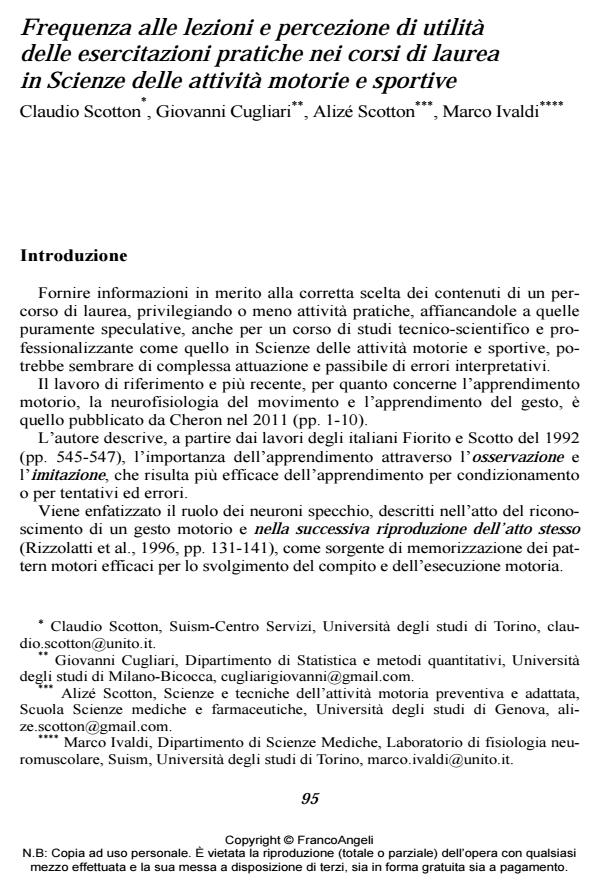Frequenza alle lezioni e percezione di utilità delle esercitazioni pratiche nei corsi di laurea in Scienze delle attività motorie e sportive
Titolo Rivista CADMO
Autori/Curatori Claudio Scotton, Giovanni Cugliari, Alizé Scotton, Marco Ivaldi
Anno di pubblicazione 2016 Fascicolo 2016/1
Lingua Italiano Numero pagine 14 P. 95-108 Dimensione file 198 KB
DOI 10.3280/CAD2016-001010
Il DOI è il codice a barre della proprietà intellettuale: per saperne di più
clicca qui
Qui sotto puoi vedere in anteprima la prima pagina di questo articolo.
Se questo articolo ti interessa, lo puoi acquistare (e scaricare in formato pdf) seguendo le facili indicazioni per acquistare il download credit. Acquista Download Credits per scaricare questo Articolo in formato PDF

FrancoAngeli è membro della Publishers International Linking Association, Inc (PILA)associazione indipendente e non profit per facilitare (attraverso i servizi tecnologici implementati da CrossRef.org) l’accesso degli studiosi ai contenuti digitali nelle pubblicazioni professionali e scientifiche
Providing an explanatory, unambiguous and definitive discussion on the role of the speculative and practices components in the teaching of a discipline is complex. It might seem obvious that scientific and technical disciplines require different learning activity, sometimes more practical, sometimes more theoretical. But these conventional approaches actually are not fully proven. Regarding Human Movement Sciences, historically assigned to the technical-scientific branch, for long time the need to support the practical experiential with theoretical notions was discussed about, with a proper crosscutting approach. The present study aims to investigate these characteristics, specifically trying to clarify some aspects of teaching a practical matter, Artistic Gymnastic, in the course of study in Science of motor and sports activities. Specifically, the results show that students who attend classes getting a final vote higher than non-attending, and those who believe in the utility of active learning of this discipline have a final vote higher than those who believe that the matter has little or no utility. The study tries to provide an objective analysis in a highly subjective area, highlighting details purely related to the conduct of practical exercises in the teaching of sciencetechnique matter.
Parole chiave:Active learning, traditional teaching, learning by doing, self-assessment, human movement sciences, physical education
Claudio Scotton, Giovanni Cugliari, Alizé Scotton, Marco Ivaldi, Frequenza alle lezioni e percezione di utilità delle esercitazioni pratiche nei corsi di laurea in Scienze delle attività motorie e sportive in "CADMO" 1/2016, pp 95-108, DOI: 10.3280/CAD2016-001010